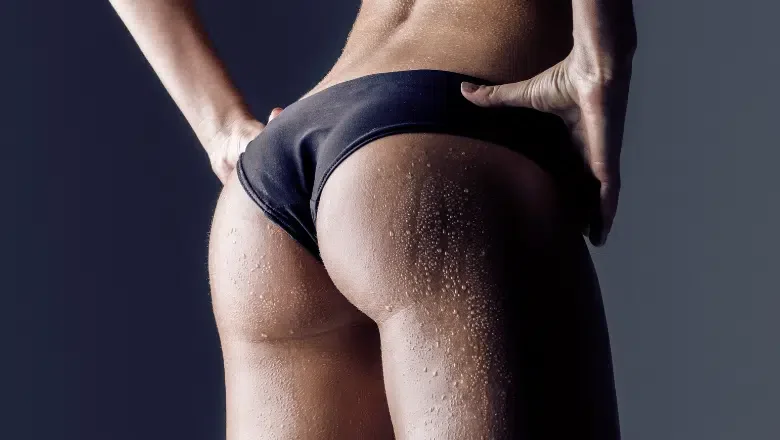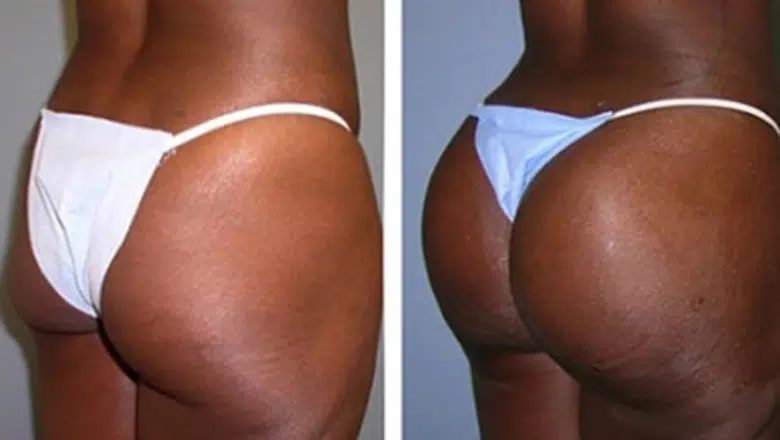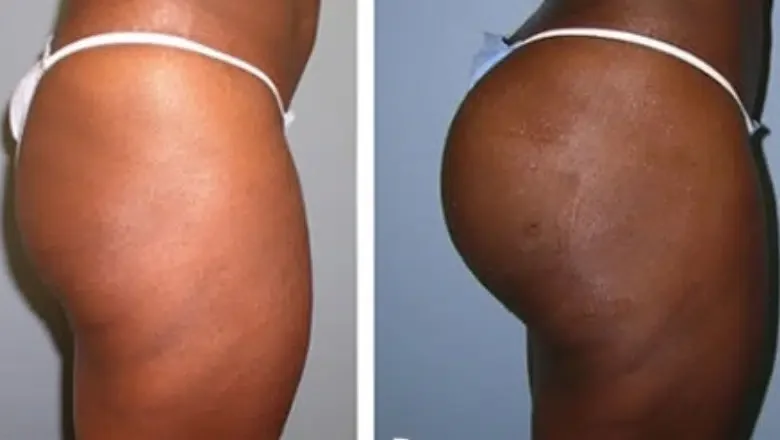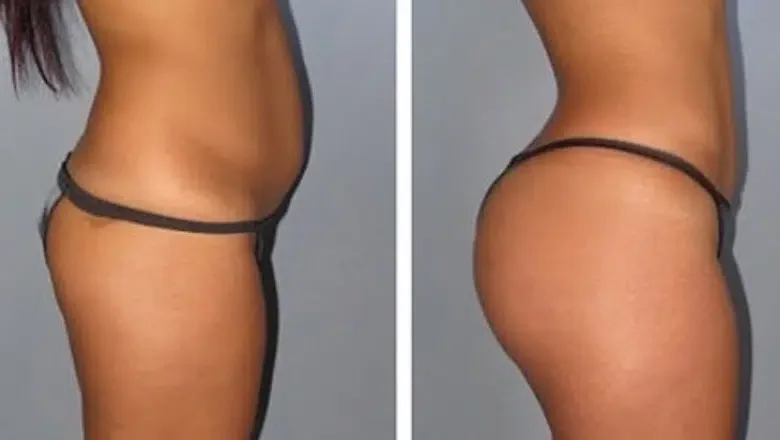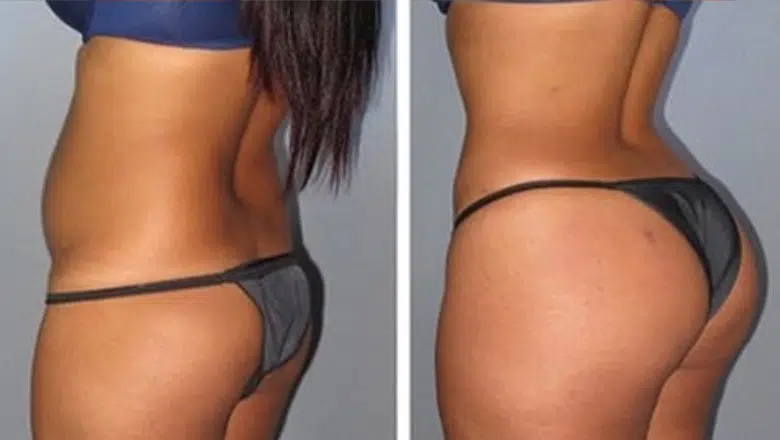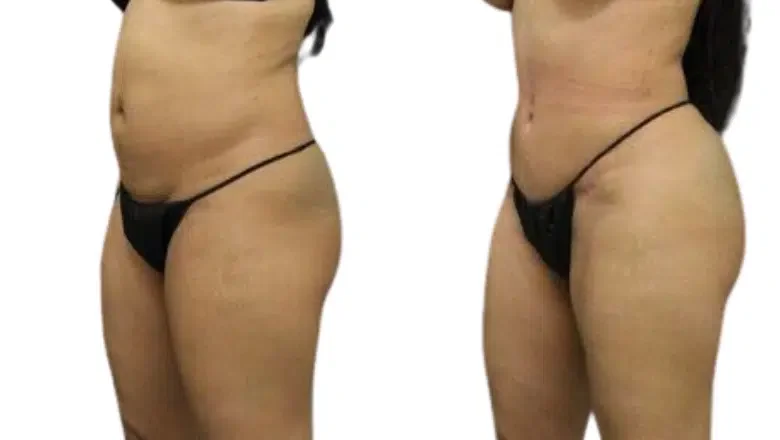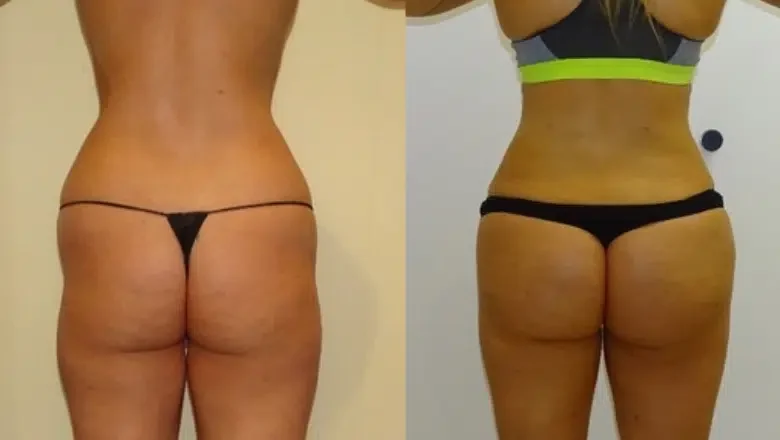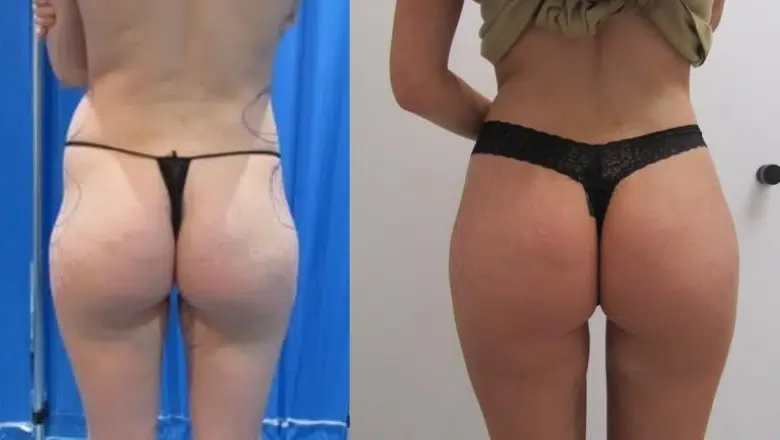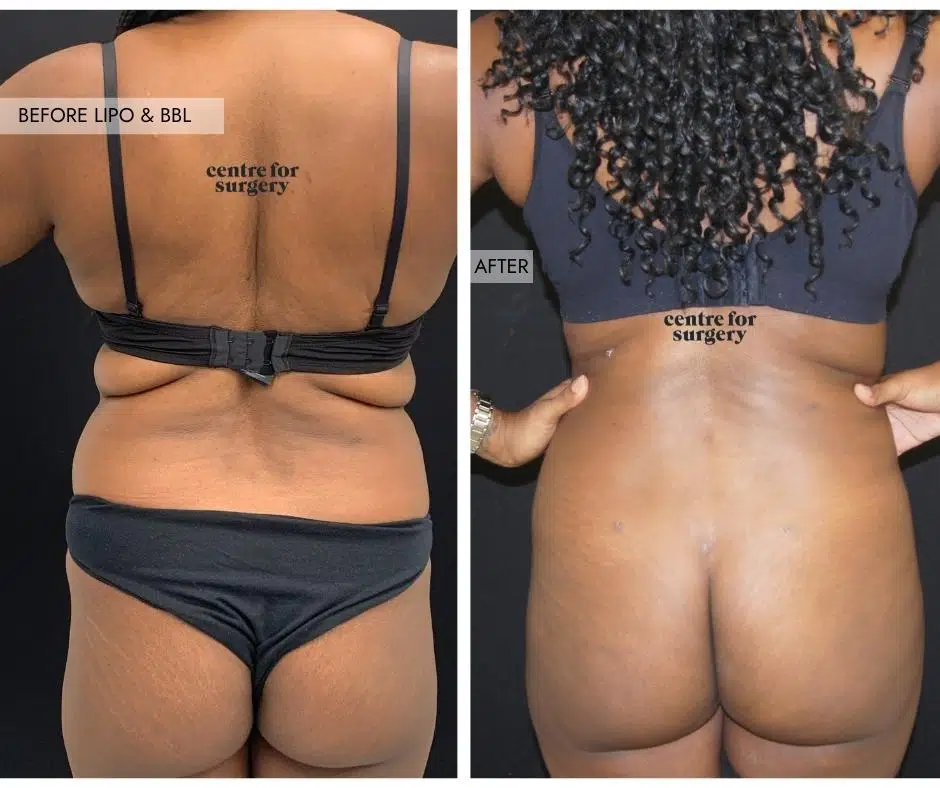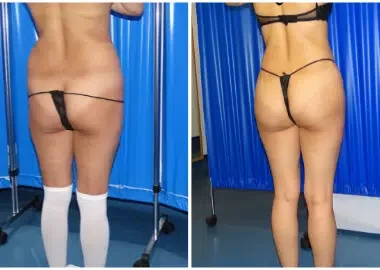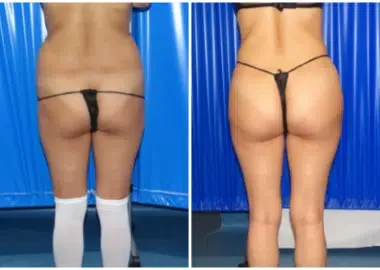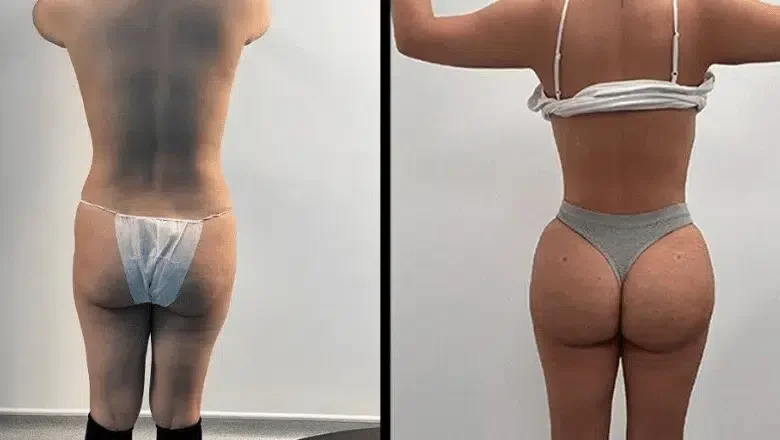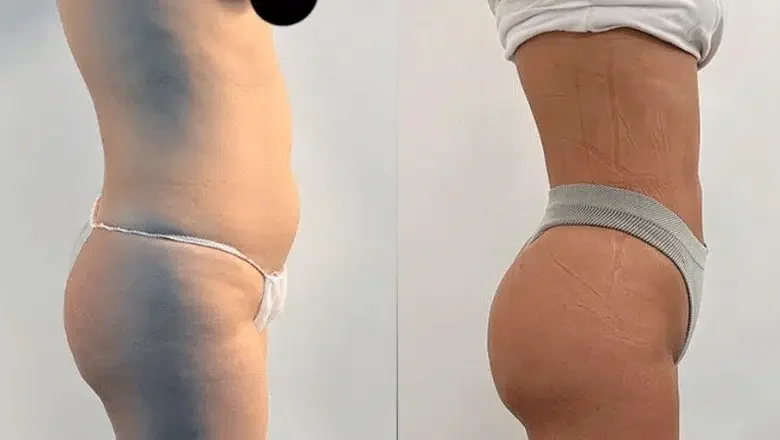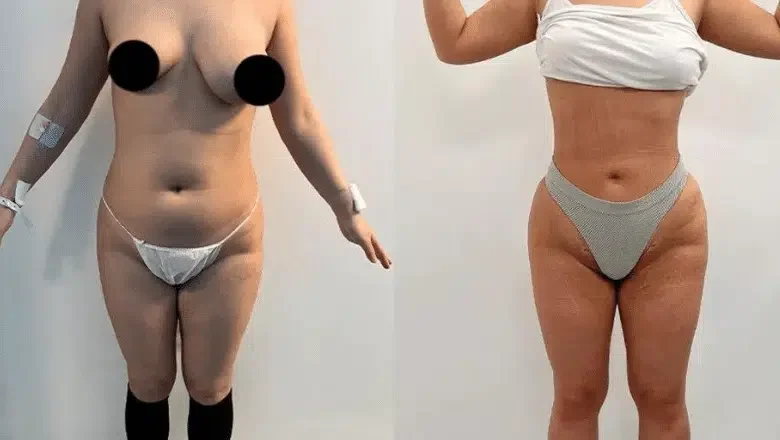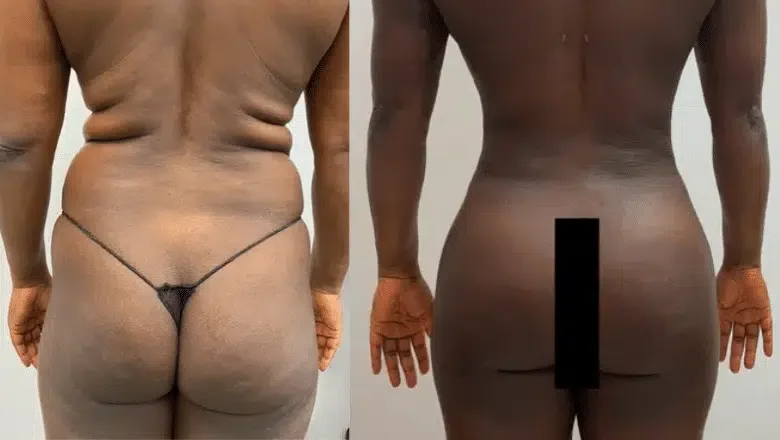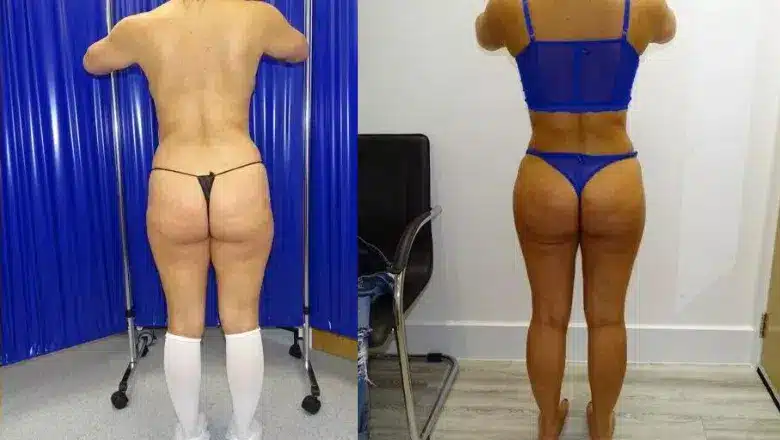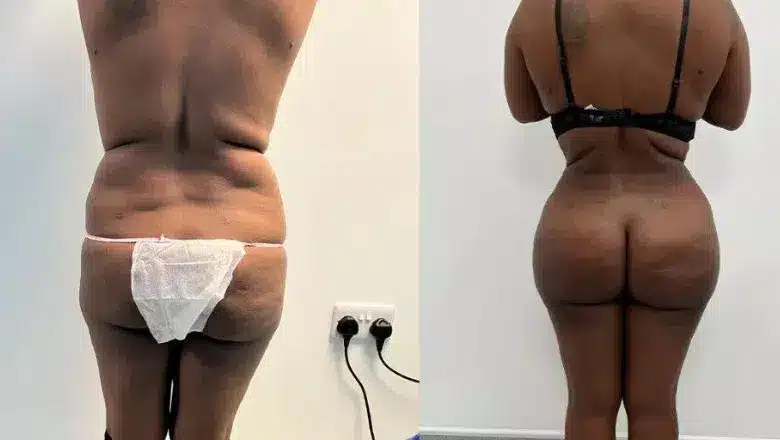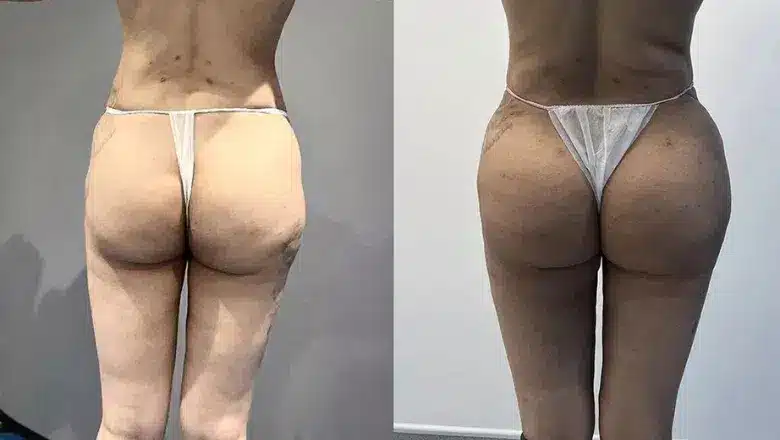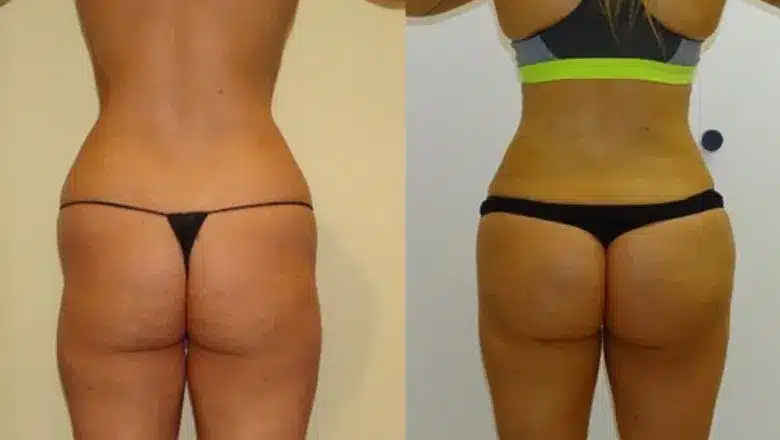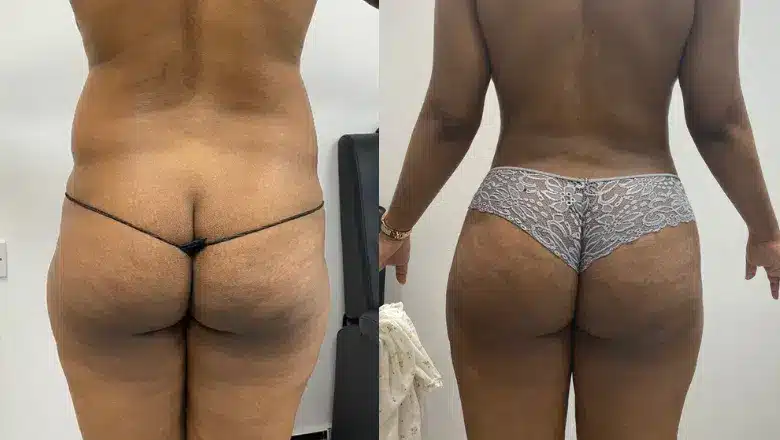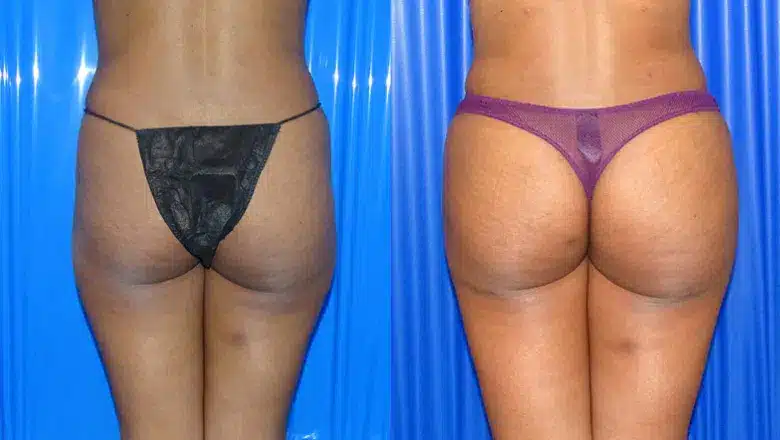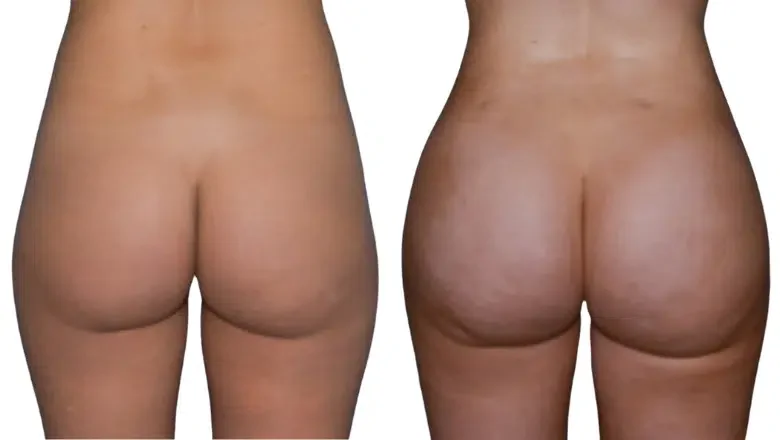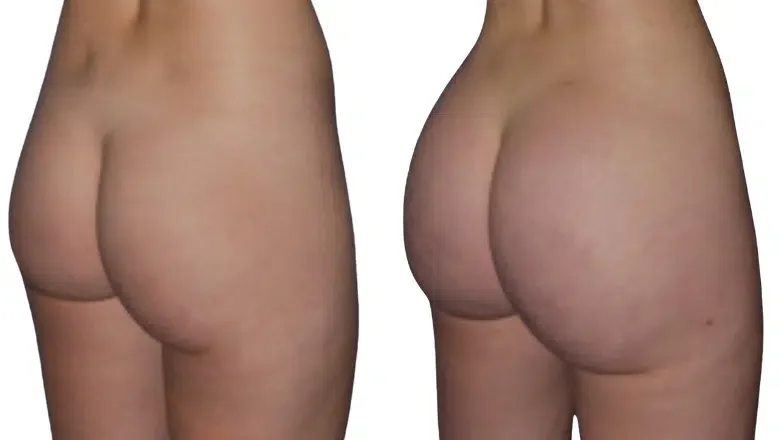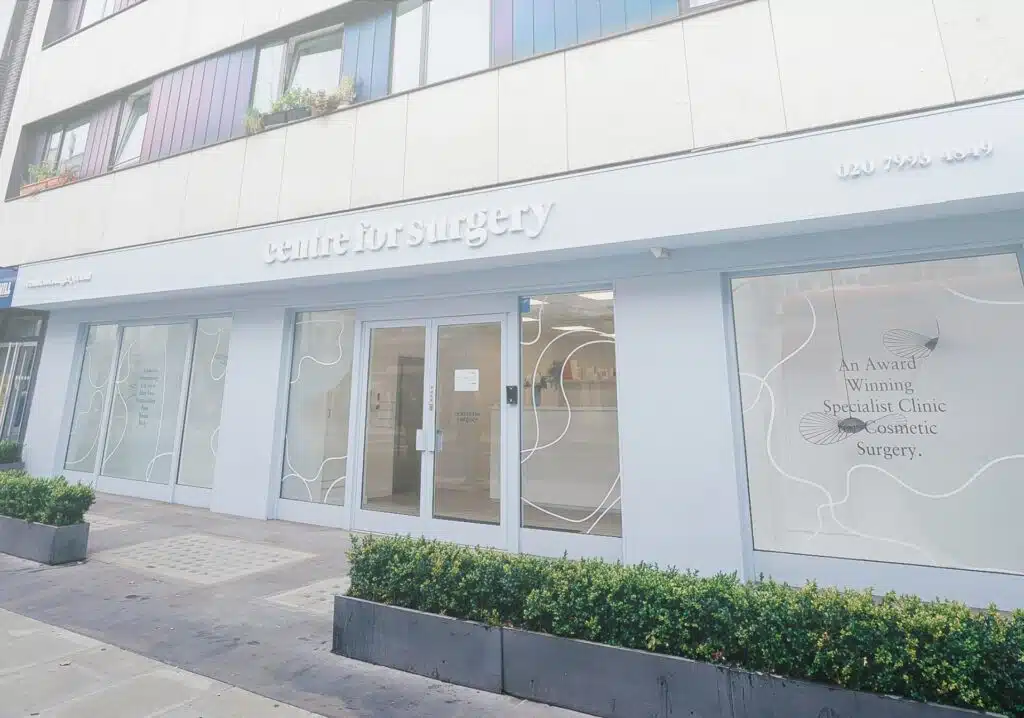Brazilian butt lift (BBL) is a popular cosmetic procedure at Centre for Surgery in London that involves transferring fat from one part of the body to the buttocks to enhance its shape, size and contour. BBL has become a common solution in the UK for people looking to achieve a more curvaceous and attractive appearance. However, many people are unsure of what to expect after BBL, especially when it has been done several years ago.
If you had a BBL ten years ago, it is important to consider what you can expect in terms of results. This article will provide you with a comprehensive guide on the factors that can affect the outcome of BBL after 10 years, the benefits and potential risks of the procedure, and how to prepare for it.
RELATED: Brazilian Butt Lift FAQs – Q&A about BBL Surgery
How long does BBL last?
The results of a Brazilian Butt Lift (BBL) can last for several years, but this can vary depending on several factors. Some of the most important factors that can affect the longevity of a BBL include the amount of fat transferred, the patient’s weight, and the patient’s lifestyle. On average, the results of a BBL can last over 5 years, but with proper postoperative care and a stable weight, the results can last even longer. It is important to note that the longevity of the results can vary from person to person, and it is always best to consult with your surgeon for specific recommendations and information about the results you can expect from your BBL.
RELATED: How Long Does BBL Last?
Factors that may impact the results of BBL
Undergoing a Brazilian Butt Lift (BBL) can transform your appearance and boost your confidence. However, it’s essential to recognise that both immediate recovery and natural body changes over time can influence the outcomes of your BBL. To maximize the chances of achieving the best possible results and to minimize the risk of complications, selecting a reputable and experienced surgeon within the UK is crucial. The expertise of your surgeon plays a significant role in the initial success of the procedure and in providing top-notch aftercare, especially if any concerns arise post-surgery.
One of the potential pitfalls of seeking surgery abroad is the variability in the quality of care and aftercare services. While overseas procedures can sometimes offer cost savings, the level of aftercare and the ease of addressing post-operative concerns may not match what is available in the UK. This is an important consideration for anyone thinking about where to have their surgery performed.
During your consultation, your surgeon should offer a clear perspective on what to expect from your BBL by presenting before and after photos of previous patients. These images serve as a visual guide to potential outcomes, taking into account your unique body shape and desired results. This personalized approach ensures you have a realistic understanding of how your own results might develop post-surgery.
RELATED: Brazilian Butt Lift (BBL) Before & After Photos
Moreover, it’s worth noting that the longevity of BBL results can be influenced by several factors beyond the skill of the surgeon. These include your body’s natural ageing process, weight fluctuations, and lifestyle choices, all of which can affect the appearance of your buttocks over the years. Maintaining a stable weight and a healthy lifestyle can help prolong the results of your BBL, ensuring you enjoy your new contours for as long as possible.
Natural ageing process
Like any other body part, the buttocks are not immune to the effects of ageing. Over time, the skin can become loose and saggy due to the loss of collagen and elastin. The butt may also appear flatter and less shapely due to a reduction in muscle mass and the accumulation of fat.
Weight fluctuations
Weight fluctuations can also have an impact on the results of BBL after 10 years. Significant weight loss or gain can result in changes to the shape and size of the butt. This is because the transferred fat cells are not immune to changes in weight.
Genetics
Genetics can also play a role in the outcome of BBL after 10 years. Some people may naturally have a flat or saggy butt, even if they have had a BBL procedure in the past. This is because genetics can determine the distribution of fat in the body.
Hormonal changes
Hormonal changes, such as those that occur during menopause or pregnancy, can also affect the outcome of BBL after ten years. Hormonal changes can cause fluctuations in weight, changes in the distribution of fat, and an increase in skin laxity.
Lifestyle habits
Lifestyle habits, such as sitting for long periods, lack of exercise, and poor posture, can also contribute to the loss of butt shape and volume over time. This is because these habits can lead to a reduction in muscle mass and an increase in fat deposits in the butt.
BBL Results Over Time
The results of a BBL are typically long-lasting, but over time, some changes may occur. Understanding the changes that can occur in the first year, as well as in the years that follow, can help you make informed decisions about your post-operative care and help you maintain the results of your BBL.
BBL results after one year
In the initial weeks following your BBL, it’s normal to experience swelling and bruising around the treated areas. This is part of the body’s natural response to surgery and the healing process. Typically, these symptoms begin to subside within the first 8 weeks, gradually revealing the changes made to your silhouette.
One of the critical aspects of the BBL recovery process is the reabsorption of injected fat. During the first 3 to 6 months post-surgery, it’s common for up to 50% of the transferred fat to be naturally absorbed by the body. This rate of reabsorption varies significantly among patients, as each individual’s body reacts differently to the grafting process. Given this variability, surgeons often inject a slightly higher volume of fat than the intended final result to compensate for this anticipated loss.
After the 6-month milestone, the rate of fat reabsorption stabilises, and the true results of the surgery start to become apparent. By this time, the swelling has typically resolved, and the transferred fat has established a stable blood supply, which is crucial for its survival. Patients can expect their buttocks to appear fuller and more lifted compared to their pre-surgery state, aligning closely with the outcomes discussed during pre-operative consultations.
The one-year mark is often viewed as a significant point in the BBL recovery timeline. By then, the body has fully adapted to the changes, and the results are stable, allowing patients to fully appreciate the transformation. The intended aesthetic—enhanced volume and contour of the buttocks—is now evident, offering a renewed sense of confidence and satisfaction with one’s body.
BBL after two years
Two years after undergoing a Brazilian Butt Lift (BBL), your body will have fully adjusted to the changes, with your buttocks having settled into their new shape. At this juncture, significant alterations in the appearance of your enhanced contours are unlikely, marking a period of stability in the surgical outcomes. This stability underscores the importance of maintaining a healthy lifestyle to preserve the results of your surgery over the long term.
A balanced diet and regular exercise play pivotal roles in keeping your overall weight stable, which is crucial for sustaining the aesthetic achievements of your BBL. Weight fluctuations can impact the volume and shape of your buttocks, as the fat cells transferred during the procedure can grow or shrink in size. Thus, a commitment to a healthy lifestyle not only supports your general well-being but also helps maintain the silhouette achieved through your BBL.
BBL after five years
Five years after undergoing a Brazilian Butt Lift (BBL), many patients continue to enjoy and maintain the positive outcomes of their surgery. This enduring satisfaction is testament to the procedure’s ability to offer long-lasting transformations, provided that patients adhere to the post-operative care instructions and embrace a healthy lifestyle.
The longevity of BBL results significantly depends on the comprehensive aftercare regimen outlined by the surgeon immediately following the procedure. This regimen typically includes wearing compression garments, avoiding direct sitting on the buttocks for a prescribed period, and following specific guidelines for physical activity. Patients who diligently follow these instructions are more likely to see their optimal results last well beyond the five-year mark.
Equally important to following post-operative care is the commitment to a healthy lifestyle in the years after the surgery. This includes maintaining a stable weight through a balanced diet and regular exercise. Such lifestyle choices are crucial because the fat cells transferred to the buttocks during a BBL can increase or decrease in size, depending on weight fluctuations. Therefore, keeping your weight stable helps to preserve the shape and volume achieved through the surgery.
RELATED: What Happens if I Gain Weight After A BBL?
BBL after ten years or more
A decade after your Brazilian Butt Lift (BBL), you’re likely to still appreciate the enhanced volume and uplift that the surgery provided to your buttocks. This long-term satisfaction is a testament to the durability of BBL results. However, it’s equally important to acknowledge that as time passes, natural bodily changes, particularly those associated with aging, can influence the appearance of your BBL outcomes.
As we age, our skin undergoes significant changes, losing elasticity due to decreased levels of collagen and elastin. This natural process can lead to the skin stretching and sagging, a phenomenon that’s more pronounced in areas with higher fat content, such as the abdomen, thighs, and buttocks—all of which are focal points in a BBL procedure. Consequently, some degree of sagging around the buttocks is normal, resulting from the skin’s natural tendency to stretch and lose its firmness over time.
While the majority of BBL patients continue to enjoy their results many years post-surgery, the quality of the initial procedure plays a crucial role in the longevity of these outcomes. Unfortunately, surgeries performed by less reputable surgeons may lead to less satisfactory results, which could manifest issues sooner than the ten-year mark. In such scenarios, patients might observe undesirable changes that could prompt the consideration of corrective procedures.
Corrective actions may include additional fat transfer to replenish lost volume or lift surgeries to address sagging skin, tailored to the individual’s current needs and aesthetic goals. These interventions can help restore the buttocks’ appearance, countering the effects of aging and ensuring that the patient’s satisfaction with their BBL results extends well into the future.
How to maintain the Best BBL results
Maintaining the results of a BBL requires a combination of lifestyle changes, exercise, and proper postoperative care.
Lifestyle Changes:
- Avoid prolonged sitting: Prolonged sitting can put pressure on the buttocks and disrupt fat transfer. It is best to avoid sitting for long periods, especially in the first few weeks after the procedure.
- Maintain a healthy weight: Gaining or losing a significant amount of weight can affect the results of a BBL. It is essential to maintain a stable weight to preserve the appearance of the buttocks.
- Avoid smoking: Smoking can delay the healing process and increase the risk of complications after a BBL. It is recommended to quit smoking or avoid it altogether.
Exercise:
- Focus on glutes: Targeting the glutes with exercises such as squats, lunges, and deadlifts can help enhance the results of a BBL.
- Avoid high-impact exercises: High-impact exercises such as running or jumping can put pressure on the buttocks and disrupt the fat transfer. It is best to avoid these exercises for several months after the procedure.
- Gradually increase intensity: It is important to start slowly and gradually increase the intensity of exercise to avoid putting too much pressure on the buttocks.
Postoperative Care:
- Follow your surgeon’s instructions: It is essential to follow your surgeon’s post-operative instructions, including wearing compression garments, avoiding strenuous activity, and using ice packs to reduce swelling.
- Attend all follow-up appointments: Regular follow-up appointments with your surgeon are crucial to monitor the progress of your recovery and ensure that the results of the BBL are being maintained.
- Massage the buttocks: Gentle massage of the buttocks can help distribute the transferred fat and enhance the results of the BBL.
RELATED: Recovery After BBL Surgery – Top Tips
Maintaining the results of a BBL requires a combination of lifestyle changes, exercise, and proper post-operative care. It is essential to follow your surgeon’s instructions, attend all follow-up appointments, and make lifestyle changes that promote a healthy recovery. By doing so, you can preserve the results of your BBL and enjoy beautiful, shapely buttocks for years to come.
RELATED: How visible will BBL scars be?
Will I need revision surgery for BBL after 10 years?
Over time, the results of a Brazilian Butt Lift (BBL) can evolve due to natural aging processes, weight fluctuations, and changes in skin elasticity. After a decade, you might find that the once optimal outcomes of your BBL are beginning to diminish, prompting considerations for revision surgery to rejuvenate or maintain the desired appearance.
Assessing the Need for Revision Surgery
A decade after your initial BBL procedure, it’s not uncommon to re-evaluate the results and consider whether additional interventions are necessary. Some individuals may notice a reduction in volume or changes in the contour of the buttocks that lead them to contemplate a secondary fat transfer. This can help restore lost volume and address sagging, ensuring the buttocks remain proportionate and aesthetically pleasing.
RELATED: Revision BBL
For others, adding more volume might not be the objective. Instead, procedures like a Buttock Lift or Thigh Lift may be more appropriate. These surgeries are designed to remove excess skin around the buttocks and thighs, offering a solution to sagging and improving the overall silhouette without increasing size.
Longevity of BBL Results
It’s reassuring to know that according to expert BBL surgeons, approximately half of the patients remain satisfied with their surgical outcomes ten years post-procedure, without the desire for further surgical enhancements. The other half may consider additional fat transfers to augment their original results, counteracting the effects of aging and maintaining their preferred aesthetic.
Fortunately, the need for a full revision surgery or interventions to correct complications from the initial surgery is relatively rare. Such scenarios are more likely if the original procedure was performed by a less reputable surgeon or if unexpected issues arose post-operatively.
Consultation for Revision
If you have concerns about your BBL results as time has passed, seeking a consultation with an expert BBL surgeon is a wise step. During this meeting, they can discuss potential revision options tailored to your current needs and expectations. The surgeons will outline what secondary surgery involves, the achievable outcomes, and any associated risks, helping you make an informed decision about your next steps.
Addressing Medical Emergencies
It’s crucial to address any medical emergencies or complications following cosmetic surgery promptly. If you encounter such issues, contacting the surgeon who performed your procedure and visiting the nearest Emergency Department as quickly as possible is essential for your health and safety.
BBL after 10 years FAQs
Here are some frequently asked questions about the long-term results of a Brazilian Butt Lift (BBL) 10 years after the procedure:
What will my BBL look like after 10 years?
The results of a BBL are designed to last a lifetime, as the fat cells that survive transfer will stay in your buttocks. However, natural ageing and weight fluctuations can alter the appearance over time.
Will I need a touch-up or revision surgery after 10 years?
This entirely depends on how your body responds over time. Some patients may find that they want a touch-up or revision after several years due to ageing or weight changes.
Will I still have a fuller, rounder buttocks 10 years after a BBL?
Yes, you will likely still have a fuller, rounder buttocks ten years after a BBL, provided that you’ve maintained a stable weight and healthy lifestyle. However, natural ageing can cause some loss of volume and sagging.
Can weight gain or loss affect my BBL results after 10 years?
Yes, weight gain can cause the fat cells in your buttocks (and the rest of your body) to enlarge, and weight loss can cause them to shrink. Significant weight fluctuations can alter the results of your BBL.
Are there any long-term risks or complications associated with a BBL?
Long-term risks are rare but can include asymmetry, changes in skin sensation, dissatisfaction with aesthetic results, and fat necrosis (death of fat cells that have been moved). Regular check-ups can help ensure any issues are caught and addressed early.
Schedule a BBL consultation at Centre for Surgery
BBL after 10 years can provide a number of benefits, including the correction of sagging and drooping, improved shape and contour, enhanced confidence, and rejuvenation of the butt area. However, there are also potential risks, including scarring and tissue damage, poor healing and infection, numbness or decreased sensitivity, and unsatisfactory results.
To prepare for BBL after 10 years, it is important to schedule a consultation with a plastic surgeon, undergo a medical evaluation and receive clearance, maintain healthy lifestyle habits, and discuss your goals and expectations for the procedure. By considering these factors, you can ensure that you are fully informed about the procedure and that you are well-prepared for your BBL experience.

